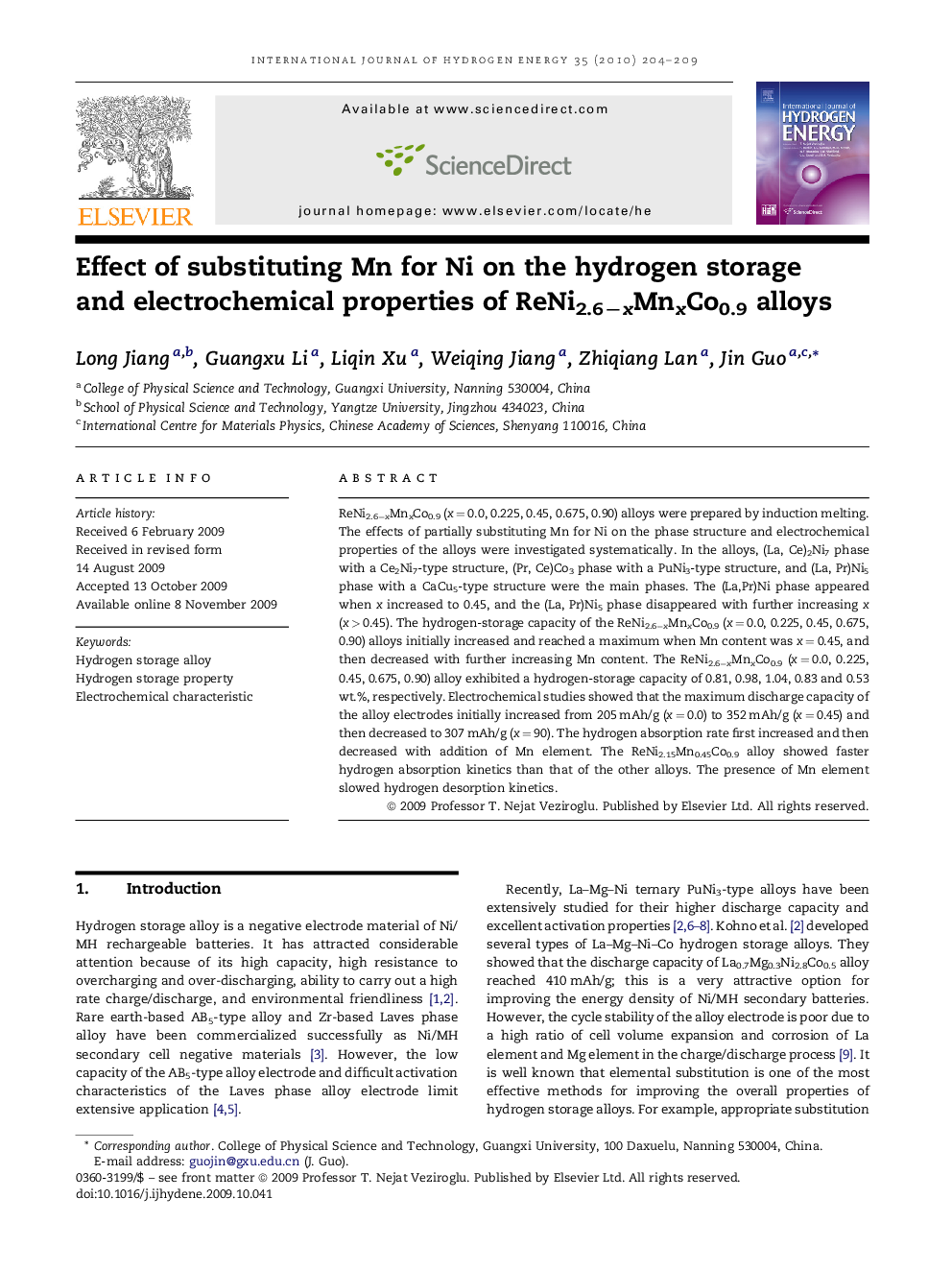| Article ID | Journal | Published Year | Pages | File Type |
|---|---|---|---|---|
| 1282981 | International Journal of Hydrogen Energy | 2010 | 6 Pages |
Abstract
ReNi2.6âxMnxCo0.9 (x = 0.0, 0.225, 0.45, 0.675, 0.90) alloys were prepared by induction melting. The effects of partially substituting Mn for Ni on the phase structure and electrochemical properties of the alloys were investigated systematically. In the alloys, (La, Ce)2Ni7 phase with a Ce2Ni7-type structure, (Pr, Ce)Co3 phase with a PuNi3-type structure, and (La, Pr)Ni5 phase with a CaCu5-type structure were the main phases. The (La,Pr)Ni phase appeared when x increased to 0.45, and the (La, Pr)Ni5 phase disappeared with further increasing x (x > 0.45). The hydrogen-storage capacity of the ReNi2.6âxMnxCo0.9 (x = 0.0, 0.225, 0.45, 0.675, 0.90) alloys initially increased and reached a maximum when Mn content was x = 0.45, and then decreased with further increasing Mn content. The ReNi2.6âxMnxCo0.9 (x = 0.0, 0.225, 0.45, 0.675, 0.90) alloy exhibited a hydrogen-storage capacity of 0.81, 0.98, 1.04, 0.83 and 0.53 wt.%, respectively. Electrochemical studies showed that the maximum discharge capacity of the alloy electrodes initially increased from 205 mAh/g (x = 0.0) to 352 mAh/g (x = 0.45) and then decreased to 307 mAh/g (x = 90). The hydrogen absorption rate first increased and then decreased with addition of Mn element. The ReNi2.15Mn0.45Co0.9 alloy showed faster hydrogen absorption kinetics than that of the other alloys. The presence of Mn element slowed hydrogen desorption kinetics.
Related Topics
Physical Sciences and Engineering
Chemistry
Electrochemistry
Authors
Long Jiang, Guangxu Li, Liqin Xu, Weiqing Jiang, Zhiqiang Lan, Jin Guo,
